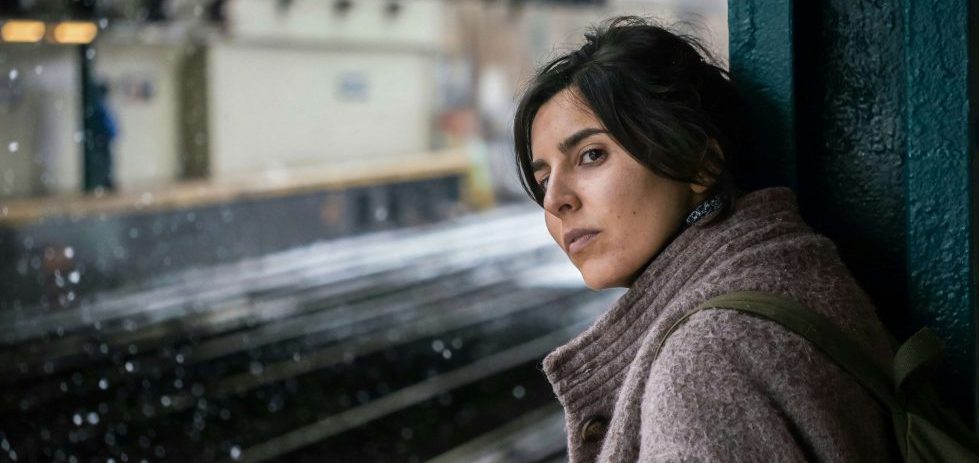
The opening shot of Hermia & Helena looks down from a high apartment window over a Manhattan soccer oval, a ballet-happening of players moving upon the field, in a wink to the opening of Matias Piñeiro’s previous film The Princess of France (2014). Except, like all his prior work, The Princess of France was filmed in Argentina. The old image and its emotional baggage haunts the new. For those who’ve travelled with Piñeiro through The Stolen Man, They All Lie, Rosalinda, Viola and The Princess of France, the rupture is keenly felt, as if we too were living in two cities at once, adrift in downtown Manhattan while dreaming of Buenos Aires.
During the press conference following the film’s world premiere at Locarno, the 34-year-old writer-director who relocated to NYC five years ago acknowledged the autobiographical element of his films, saying, “I drink from what’s around me.” While The Princess of France—another Locarno debut—followed a group of friends reuniting to record a radio-play of Love’s Labour’s Lost (an exercise in wish fulfilment?), Hermia & Helena is the first work Piñeiro has shot in the States. Fittingly, new friends from the US indie film world (mumble-slacker Keith Poulson, filmmakers Dan Sallitt and Mati Diop) join the beloved ensemble of recurring Argentinian actors and crew, including DP Fernando Lockett, whom Piñeiro calls “my film family”.
And so it goes for a young Argentinian woman named Camila (Piñeiro favourite Agustina Muñoz), who travels to NYC for a fellowship to translate A Midsummer Night’s Dream, the play which gives Piñeiro’s film its title and its breezy gambol. Speaking to Film Comment in 2013, the writer-director spoke of his interest in narratives where the text becomes more powerful than the people; in his fourth Shakespearean Millennial riff, we again see his postmodern adaptations experiment with particular scenes or ideas, sidelining considerations of plot and realism in deference to toying with narrative devices; the new slants through which Piñeiro can enliven a classic text.
In Hermia & Helena, Piñeiro shifts from the performance of Shakespeare’s comedies to their translation, a thematic which is lived through Camila. This means the joyous rehearsal scenes that electrify his previous films—dialogue looping and blooming so that a couplet, heard the fourth time round, leaves your heart racing—are traded for Camila’s emotional and physical non-linear journey from South to North America, expressed through her shifting amours and montages of the tree-lined boulevards of Buenos Aires that flow into the crown of the Manhattan Bridge. Language, relationships, time and seasons are in flux, interpreting our fragmented experience of the contemporary world with fresh imagery and welcome joyous sparks.

This flux also colours the relationship of Camila and Carmen (María Villar), best friends and consecutive fellows, with Camila taking Carmen’s place in Manhattan, receiving a series of postcards intended for her friend and dallying with her hand-me-down flings. While Shakespeare’s Hermia and Helena were the subject of their lovers’ fickle affections, Piñeiro inverts this, letting the two women globetrot and call the shots. Rather than a simple feminist revision, though, Piñeiro’s film contains multiple Hermias and Helenas. Shakespeare’s sparring duets define the film’s non-linear structure, which is sectioned with title cards into speed dating tête-à-têtes: Carmen and Camila, Camila and Lukas, Camila and Gregg, etc.
Over the course of these encounters, we experience the excitement of Piñeiro’s nimble storytelling: the source play enjoys a double life as an object that Camila carries about with her, quotes from, that is blown up across the screen, circled, and its margins scrawled upon, and as a canonical text bursting at the seams. The role of Hermes’ father Egeus is reworked by Pinero as a key dramatic shift, while the famous fairy-filled forest is translocated to Fort Greene Park. There we meet Camila’s ex Gregg (Dustin Guy Defa), whose brief screen time—wooed and ditched within minutes—is complemented by a short film-within-a-film, a whimsical way of capturing his interiority and backstory as Camila shrugs him off for the doe-eyed Lukas (Poulson).
Borrowing footage from a grainy 1940s film and lines from Hitchcock’s Rebecca, this inner short contains some of the many cinephilic Easter eggs that are scattered throughout Hermia & Helena. Hal Roach gets a nod, Ozu too, and the film is dedicated to the iconic Japanese actress Setsuko Hara, who passed last year. While this is still a talk-heavy film—how could it not be by a filmmaker so bewitched by language?—Piñeiro stated in the press conference that he wanted to take something from Setsuko’s manner, to learn from her silences. In the most moving section of the film, the silences that sit between estranged daughter and father speak volumes.
